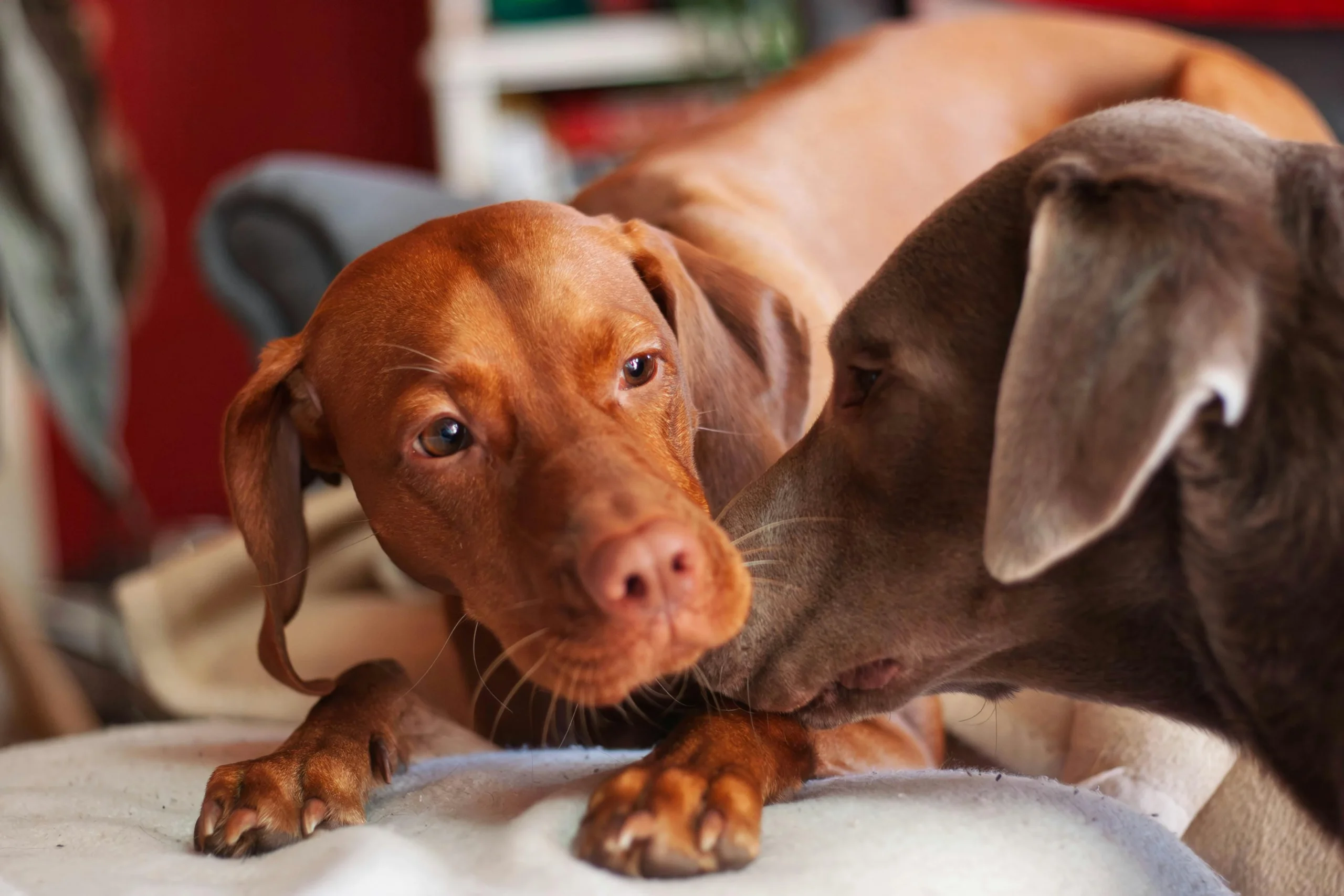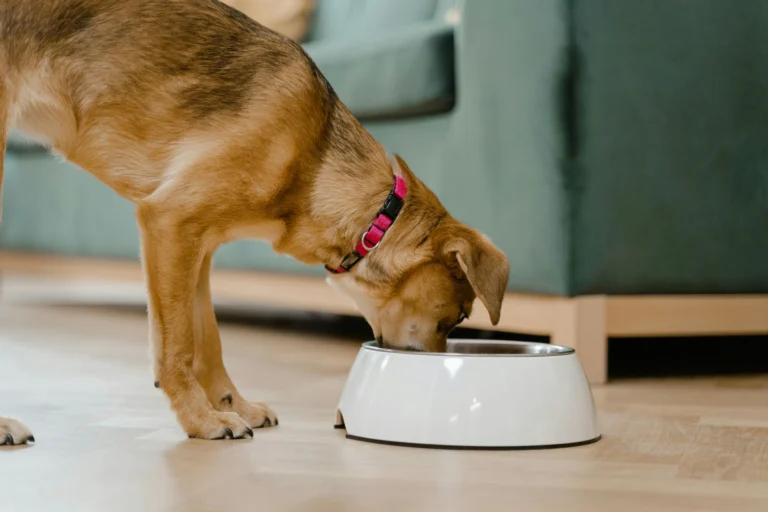Signs of Dementia in Older Dogs
Introduction: Understanding the Signs of Dementia in Older Dogs
Dogs, like humans, undergo both physical and mental changes as they grow older. While gray fur and slower movements are common and expected, some behavioral shifts might indicate something more serious. One condition that pet owners should be particularly aware of is canine cognitive dysfunction, often referred to as dog dementia. Recognizing the signs of dementia in older dogs is essential to ensure your loyal companion receives the best possible care during their golden years.
Dementia in dogs is a progressive brain disorder that affects memory, learning, perception, and behavior. It usually develops gradually, which is why many dog owners might mistake the symptoms for normal aging. However, being aware of the differences between typical senior behavior and the early signs of cognitive decline can make a big difference in your pet’s quality of life.

Early signs of dementia in senior dogs often include confusion, getting lost in familiar places, changes in sleep habits, and decreased interest in favorite activities. Some dogs may forget house training, seem anxious without cause, or start barking at seemingly nothing. These behaviors are not just quirks, they are often the first indicators of a declining cognitive state.
Identifying these signs early gives you the opportunity to consult with your veterinarian, rule out other health conditions, and start supportive care to slow progression. While there is currently no cure for dog dementia, many treatments, including specialized diets, supplements, medications, and environmental changes, can significantly improve your dog’s comfort and functioning.
Understanding the signs of dementia in older dogs also allows for more compassionate caregiving. Dogs with dementia can feel frightened or stressed when they don’t understand their environment, but simple adjustments, like maintaining routines or reducing noise and clutter, can offer comfort and reassurance.
As a loving pet parent, staying informed is one of the most important ways you can support your dog during this vulnerable phase of life. In this article, we’ll explore the symptoms of canine dementia in depth, what causes it, how it’s diagnosed, and most importantly, what you can do at home to help your dog feel safe, supported, and loved.
By recognizing the signs of dementia in older dogs, you’re taking the first critical step in giving your furry friend the dignity and care they deserve in their senior years.
Table of Contents
Early Behavioral Signs to Watch For
Understanding the signs of dementia in older dogs begins with spotting small changes in behavior. These early symptoms may appear harmless or simply part of the natural aging process. However, they often signal the beginning of cognitive decline. Being attentive to your dog’s daily habits is key to identifying these signs early and ensuring timely support.
Subtle Changes That May Point to Dementia
One of the first noticeable signs of dementia in older dogs is a shift in spatial awareness. Your dog may hesitate before entering a room, seem unsure about familiar walking routes, or become stuck behind furniture. This type of disorientation shows that your dog may be struggling with memory and environmental recognition.
Another red flag is altered sleep habits. Dogs experiencing cognitive changes may become restless at night, pacing around or waking frequently. Conversely, they might sleep more during the day. These irregular sleep patterns often cause anxiety or confusion, especially when your dog is awake at odd hours without a clear reason.
In some cases, your dog may forget basic routines like where to go potty. If your senior dog starts having indoor accidents despite years of house training, it could be linked to mental confusion rather than physical inability.
Behavioral Signs of Cognitive Shifts
Aside from physical signs, dementia can also affect your dog’s personality. You may notice your pet becoming less responsive to commands or avoiding interactions with family members. This detachment may resemble hearing loss or stubbornness but is often rooted in cognitive dysfunction.
Some dogs also become overly attached, following their owners closely or becoming distressed when left alone. In contrast, others may grow distant or seem less interested in affection.
Another behavioral clue is repetitive activity. Dogs with early dementia may pace in circles, stand in corners, or engage in constant licking. These actions may appear harmless, but are often linked to mental confusion and stress.
Monitoring these early signs of dementia in older dogs gives you the opportunity to act quickly. If your dog shows any combination of these behaviors, speaking with a veterinarian can help rule out other causes and begin a treatment or care plan that improves your pet’s quality of life.
How Veterinarians Diagnose Canine Dementia
Identifying the signs of dementia in aging dogs is only the beginning. To confirm a diagnosis and develop an appropriate treatment plan, a veterinarian’s evaluation is essential. Canine cognitive dysfunction shares symptoms with many other health issues, so a thorough examination helps distinguish dementia from other conditions.
The Diagnostic Process for Signs of Dementia in Older Dogs
When you bring your dog to the vet with concerns about cognitive changes, the vet will start with a detailed medical history. This includes discussing the specific behavioral changes you’ve noticed, such as disorientation, changes in sleep patterns, or house soiling. Providing clear examples helps the vet assess whether these behaviors align with typical signs of dementia in older dogs.
A physical examination follows to check for other health problems that might cause similar symptoms. For example, issues like arthritis, vision loss, hearing impairment, or metabolic diseases can affect behavior and mobility, mimicking dementia.
Tests to Rule Out Other Conditions
Blood tests and urine analysis are often performed to evaluate organ function, check for infections, or detect hormone imbalances that could contribute to cognitive changes. For instance, thyroid dysfunction and kidney disease are common in older dogs and can impact behavior.
In some cases, imaging tests such as X-rays or MRIs might be recommended to assess brain structure or identify abnormalities that could explain neurological symptoms. While these tests can be more expensive and less accessible, they offer valuable insights when the diagnosis is unclear.
Confirming Canine Cognitive Dysfunction
Since there is no definitive lab test for canine dementia, diagnosis relies heavily on ruling out other possible causes. Veterinarians use cognitive dysfunction rating scales based on your dog’s observed behavior, sometimes coupled with video footage or diary notes kept by pet owners. The goal is to confirm the presence of hallmark signs of dementia in older dogs, including memory loss, disorientation, altered social behavior, and disrupted sleep.
Early diagnosis enables your veterinarian to recommend treatments and lifestyle changes that can improve your dog’s well-being and slow the progression of dementia. If you notice any signs of dementia in older dogs, don’t delay a veterinary consultation it can make all the difference in your pet’s quality of life.

Treatment and Management of Canine Dementia
Noticing the signs of dementia in older dogs can be overwhelming, but understanding the available treatment and care options can empower you to support your furry friend through this challenging time. While there is no outright cure for canine cognitive dysfunction, a combination of medical, dietary, and lifestyle approaches can help manage symptoms and enhance your dog’s comfort.
Medical Interventions for Dementia Symptoms
Veterinarians may recommend certain medications that help improve brain function or ease anxiety linked to dementia. These might include drugs that promote blood flow to the brain or protect nerve cells from damage. Additionally, supplements rich in antioxidants and omega-3 fatty acids are often suggested to support neurological health. These nutrients help minimize inflammation and support improved communication between brain cells, which is essential for slowing cognitive decline.
Adjusting Diet and Environment
Nutrition plays a key role in managing dementia in dogs. Feeding your pet a diet specially formulated for aging dogs, often enriched with brain-boosting ingredients, can be beneficial. For dogs with digestive sensitivities, switching to the best dog food for sensitive stomachs that also supports cognitive health is a smart choice. Maintaining hydration and providing frequent, smaller meals can also help.
Creating a calm, predictable environment is essential. Consistency in daily routines helps reduce confusion. Avoid rearranging furniture, keep noise levels low, and make sure your dog’s favorite resting places, food, and water bowls are easy to find.
Mental and Physical Engagement
Encouraging gentle physical activity suited to your dog’s capabilities helps maintain overall health. Alongside exercise, mental stimulation is important. Simple games, short training sessions, and puzzle toys challenge your dog’s brain and may slow cognitive decline. Spending quality time together also reduces anxiety and strengthens your bond.
While managing the signs of dementia in older dogs requires patience and care, these strategies can significantly improve your dog’s well-being. Collaborate closely with your vet to tailor a plan that suits your dog’s unique needs, allowing them to enjoy their golden years with comfort and dignity.
Home Care Tips for Dogs with Dementia
Recognizing the signs of dementia in older dogs is just the beginning. Providing compassionate and tailored care at home plays a crucial role in helping your aging dog maintain comfort and dignity. Though challenging, small adjustments in your daily routine can make a big difference in managing your dog’s cognitive decline.
Designing a Safe and Familiar Space
Dogs with dementia are often unsettled or confused by changes in their environment. To reduce anxiety and accidents, it’s important to keep your dog’s environment consistent. Arrange furniture and belongings in the same places, and avoid moving essential items like food bowls or beds. Removing trip hazards such as loose rugs or clutter ensures your dog can move around confidently. Creating a cozy, quiet retreat where your dog can relax undisturbed can provide a sense of security during moments of confusion.
Establishing a Predictable Daily Schedule
A steady routine helps ease the confusion caused by dementia. Feeding, walking, playtime, and rest should happen at the same times every day to build familiarity. This consistency reduces stress and helps your dog anticipate what’s next, which is comforting for a disoriented pet. Sudden changes in schedule or environment may trigger anxiety or worsen signs of dementia in older dogs, so gradual transitions are essential.
Encouraging Gentle Mental and Physical Exercise
Maintaining mental stimulation is vital to slowing cognitive decline. Simple activities like scent games, hide-and-seek with treats, or interactive toys engage your dog’s brain without causing frustration. Regular but moderate exercise, tailored to your dog’s health level, supports both body and mind. Walking in quiet, familiar areas provides physical activity and mental enrichment while minimizing confusion.
Monitoring Behavior and Providing Comfort
Pay close attention to shifts in your dog’s behavior and mood. Increased restlessness, vocalizing, or confusion are common signs of dementia in older dogs that may require extra patience. Offering gentle reassurance through calm voice tones and touch helps soothe anxiety. If behavioral changes escalate, consult your veterinarian to adjust care strategies or medications.
By creating a stable environment, keeping routines consistent, and encouraging gentle stimulation, you can greatly improve your dog’s quality of life despite the challenges of dementia. Your attentive care and understanding are invaluable in helping your senior dog feel safe and loved.

Preventing Cognitive Decline in Senior Dogs
Understanding the signs of dementia in older dogs is essential, but taking proactive steps to prevent or slow cognitive decline is equally important. While aging is inevitable, you can support your dog’s brain health through simple lifestyle changes that promote mental sharpness and overall well-being.
Nutrition’s Role in Preventing Dementia
Diet plays a crucial role in maintaining your dog’s cognitive health. Feeding a balanced diet rich in antioxidants, omega-3 fatty acids, and vitamins can help protect brain cells from damage. Specialized senior dog foods often contain these nutrients and are designed to support memory and brain function. If your dog has a sensitive stomach, consider choosing the best dog food for sensitive stomachs that also addresses cognitive health, ensuring your pet stays comfortable while receiving essential nutrients.
Mental Stimulation to Keep the Brain Active
One of the most effective ways to delay the signs of dementia in older dogs is through regular mental exercise. Engaging your dog with puzzle toys, training exercises, and scent-based games helps stimulate their mind and promote problem-solving skills. These games strengthen neural connections, helping to maintain memory and learning abilities. Incorporating new challenges gradually can keep your dog engaged without causing frustration.
Physical Exercise and Its Cognitive Benefits
Physical activity doesn’t just benefit your dog’s body it also supports brain health. Regular walks and gentle play increase blood flow to the brain, which can improve cognitive function. Exercise also helps reduce stress and anxiety, factors that may worsen dementia symptoms. Tailor activities to your dog’s physical ability, ensuring they stay safe while active.
Creating a Stress-Free Environment
Minimizing stress is key to preventing accelerated cognitive decline. Loud noises, sudden changes, and chaotic environments can confuse and upset older dogs. Providing a calm, consistent living space with familiar routines helps your dog feel secure and reduces anxiety. This stability can delay or lessen the signs of dementia in older dogs.
By combining proper nutrition, mental and physical stimulation, and a peaceful home environment, you can support your dog’s brain health and potentially delay the onset of dementia symptoms. Early attention to these factors helps your senior dog enjoy a happier, healthier life.
Conclusion: Caring Through the Golden Years
Recognizing the signs of dementia in older dogs is not just about identifying a medical condition, it’s about honoring the deep bond you share with your loyal companion. As dogs age, they may experience memory loss, disorientation, and behavioral changes that can be difficult for both pets and their families. While these signs can be distressing, they also present an opportunity to provide your senior dog with the love, comfort, and support they need during this stage of life.
Every dog experiences aging differently, but being informed and attentive allows you to catch early indicators of cognitive decline. If your dog begins to pace aimlessly, becomes confused in familiar spaces, or shows sudden changes in behavior, don’t ignore these signs of dementia in older dogs. Early action can significantly improve your pet’s quality of life, allowing them to enjoy more joyful and meaningful moments with you.
Supporting a dog with dementia takes steady patience, routine, and heartfelt care. Simple changes like creating a calm environment, keeping routines consistent, and providing gentle mental stimulation can go a long way in helping your dog feel safe and supported. Incorporating nutritious food that supports brain health, along with regular checkups, will also aid in managing symptoms and slowing progression.
It’s equally important to care for yourself during this journey. Watching a beloved pet struggle can be emotionally taxing, but remember that your presence and care mean everything to your dog. They might forget the moments, but they’ll never forget how you made them feel loved and safe.
In the end, spotting and addressing the signs of dementia in older dogs isn’t just about medical care, it’s about showing up for your pet with kindness and dedication. With the right knowledge and approach, you can help your senior dog age with dignity, peace, and the warmth of your companionship every step of the way.
Frequently Asked Questions About Signs of Dementia in Older Dogs
Which behaviors may indicate the early stages of dementia in senior dogs?
In the early stages, you might notice your dog staring at walls, pacing aimlessly, or appearing lost in their own home. These signs of dementia in older dogs are often subtle but become more noticeable over time. A once confident pet may hesitate at doorways or forget simple commands they previously knew.
How does canine dementia differ from typical aging in dogs?
It’s normal for senior dogs to slow down and rest more. However, cognitive decline brings behavioral confusion. A dog experiencing dementia might forget routines, show anxiety when left alone, or no longer recognize familiar people. Unlike regular aging, dementia disrupts your pet’s daily functioning and emotional stability.
Can home care really make a difference?
Absolutely. While dementia isn’t curable, creating a calm and consistent home routine can slow its progression. Cognitive stimulation, low-impact exercise, and a calm environment can help your dog feel safe and supported. Paying attention to even small improvements can positively impact their quality of life.
Does diet affect cognitive health in dogs?
Yes. Feeding a senior-appropriate diet with brain-supporting nutrients is important. If your dog has food sensitivities, choose the best dog food for sensitive stomachs that also supports mental clarity. Look for formulas with omega-3s, antioxidants, and vitamins that promote brain health.
When should I talk to my vet?
If you notice repeated disorientation, house-training accidents, or changes in interaction, book a vet visit. Early detection of the signs of dementia in older dogs allows for better care planning and helps reduce long-term distress for your pet.







